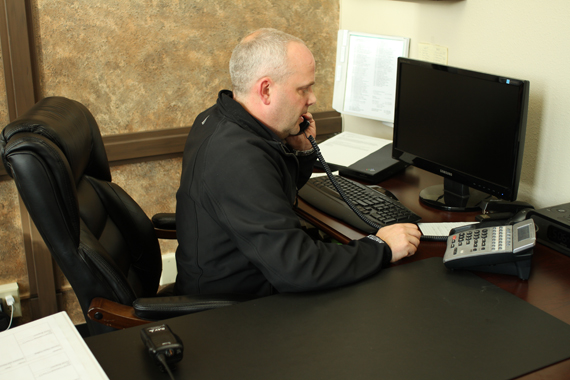
Photo by Rachel Wilson – Safe Havens International Video ©2011
Careful thought and appropriate training should address the issue of which campus employees should make calls to 911 when an emergency occurs. There should be no assumptions on the part of school administrators or rank and file employees as to the most effective way to handle 911 calls for life and death assistance. It is not uncommon for school employees to lack formal guidance on when they should call 911 during a life and death emergency situation. The wide variety of school designs and the ways they are operated at different times of the day make it impossible to have an effective standardized national approach to this seemingly simple issue.
Normally, it is best for calls to 911 to be made by school office personnel rather than employees faced with an emergency in other parts of the school. There are several reasons for this:
-
It is often difficult for staff to perform life-saving actions while they are on the phone with 911 dispatch personnel for several minutes or more.
-
If a staff member in a remote part of the building calls 911 directly, the office may not find out that there is an emergency for several minutes. This can cause a significant delay in ordering protective actions such as lockdown for the rest of the school’s occupants. This approach can also cause a delay in school crisis team members responding to the incident scene to provide assistance.
-
School offices are often staffed by multiple personnel who can manage several critical tasks at one time.
At the same time, we recommend that all school staff be specifically trained and empowered to call 911 directly if doing so will reduce the risk to students and/or staff. For example, if a staff member is unable to contact the office or there is no one in that office at the time of day the incident occurs.
Regardless of the specific situations in each school, it can be extremely important that school and area public safety officials have effective discussions on this topic. These discussions should yield workable approaches that can and should be incorporated into staff development efforts. These efforts should be geared to achieving the end result that congruent understanding between the rank and file employees, to line supervisors and middle managers, as well as among department heads and the top leadership in the organization is achieved.
A good litmus test is that if someone posed a series of several life and death scenarios to every employee in the organization, the majority of responses as to whom they would call for emergency assistance should be consistent. If experience indicates that this level of consistency would not surface, this might be a good opportunity for improvement.
Sometimes the simple things in life are among the most important. How the initial call for emergency assistance is made can be a life or death aspect of even fairly routine emergency situations. Taking the time to look at how critical information will flow in the first critical minutes of an emergency may be just as important as the technology available to communicate during crisis situations. Though it is often relatively inexpensive in terms of cost and time to address the issue of who calls 911, the failure to do so can be rather costly.
Note: This blog has been posted for Michael Dorn while he is in a rural region of Mexico with no internet or phone service. He may be delayed in responding to e-mails relating to this blog.